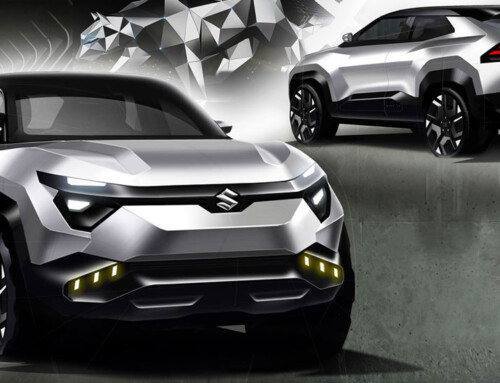Five concept cars to attract attention, one pickup truck to have fun with and two sedans to leave the public definitively drooling. Such was the Chrysler programme at the 1997 Detroit International Auto Show, revealed over the three press days and intitiated even earlier, the previous Sunday, basically in an attempt to steal the show, day by day, from the other exhibitors. And the operation was truly successful thanks to a pair of trump cards masterfully 
Three of the concept cars presented are illustrated in this issue of Auto & Design – the Plymouth Pronto, Dodge Copperhead and Chrysler Phaeton – while the next issue will feature the design story of Jeeps Icon and Dakar and the Concorde and Intrepid production sedans. “Our research still covers all the different vehicle typologies,” says Neil Walling, Chrysler’s advanced design director, as well as chief of styling for large and small cars and minivans.
“The Plymouth Pronto was designed by the Chrysler Pacifica studio in California. It explores a concept for young, first-time buyers who want a car for their own use without necessarily being forced into the usual cars. Moreover, being at an early stage of their working lives, they don’t have great financial resourses.”
The basic research for the Pronto was an in-depth study into the demands of younger drivers. “Often they go out in groups and want room for their friends. InAmerica, there’s a ‘minimum size’ for cars, which for us is represented by the Neon. People won’t accept scrimping on the rear seat dimensions,” continues Walling. “So we used the Neon platform to develop a slightly shorter but taller car that still offers the same interior comfort. The savings we made in some areas meant we could invest in others of more interest to our target customers, like the open top or the 18” wheels.
The basic Pronto recipe is this: a young buyer will only spend money on what he’s really interested in.”
As designers are well aware, making a cheap car is more difficult than tackling the top of the range. “All the makers would like to have an entry-level car, which in reality is represented by used cars. Then the customer gets to the point where he decides he would prefer to have a low-cost new car rather than a two-year-old used car. The key issue is succeeding in offering entry-level cars that are innovative enough, with a different look and a mix of solutions that isn’t available on the used-car market.”
Original styling at an affordable price is also the key to the Dodge Copperhead two-seat roadster. “It’s a car that looks to the tradition of certain early-1960s models, a period when I started getting actively interested in cars,” says Neil Walling, 53, who came to Chrysler design in 1966 fresh from the Art Center College. “Cars like the Austin Healey 3000 and some Jaguars had exceptional proportions, a gift that also characterises our Plymouth Prowler. We decided to keep the same proportions as the Prowler and reinterpret them in something more sporty. The wheels are pushed way out to the front and rear corners, almost eliminating the overhangs, so that the bodywork seems to hug the vehicle’s frame.”
The Chrysler Phaeton looks even farther back to the past, reproposing the 1930s dual-cowl concept. It is a luxury four-door convertible with the cabin split by a second windscreen, located behind the front seats, that protects rear-seat occupants from the air stream. “They were cars for wealthy customers who could afford a chauffeur. A typology that faded out when the coachbuilders started to disappear,” explains Walling. “It was interesting for us to study the kind of structure you need to make a convertible based on a four-door package.” The styling of the Phaeton is rather special, with retro elements, rounded volumes and taut lines. “We don’t use particular expressions to define our style, like Ford does with ‘edge design’; we would rather refer to the proportions, as we did before when we introduced the cab-forward theme.”
Who worked on the new concepts? In Europe, there are plenty of American designers, but it cannot be said that the opposite phenomenon occurs in the US: “We don’t have many European designers because it’s not easy for them to get work permits.
A lot of our designers graduated from the Center for Creative Studies, the school in Detroit, some of them from the Art Center College in Pasadena. The school system here is different from Europe, where you have to get a high-school diploma before going to a design school. Here the kids go straight into the transportation design courses.”
Although Chrysler, unlike the other members of the Big Three, doesn’t have a European division and has elected to maintain its American identity, several of its products are also aimed at Europe. How much does that influence the design of new models? “Our market is obviously America, but we have ‘universal’ products,” concludes Walling. “As gradually our business here and across the Atlantic continues to expand, we will change the orientation of our products to suit, not just with a view to the European markets but others as well, such as South America or Australia.”
L’articolo continua su Auto & Design n. 102











